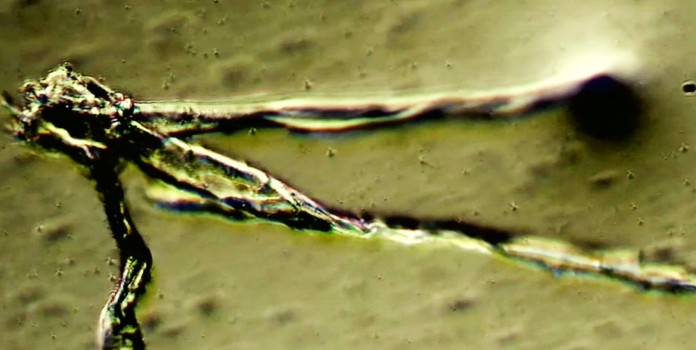The Spanish-language news service, founded by researcher Ricardo Delgado Martín, published a video in December that shows a self-assembling graphene-based “nano-octopus” in Pfizer BioNTech’s COVID-19 injections, the Daily Exposé reported.
“It looks like an insect because of its leg-like shape,” Delgado said. “It’s as if whatever it is that we see is really self-assembling—and assembling, as I say, more and more complex structures … it’s crystal clear that the background of all of this is very serious … science has been hijacked.”
The research, conducted under an optical microscope, reportedly confirms the same findings by Drs. Pablo Campra, Carrie Madej and Franc Zalewksi.
“It seems to have one head and three legs. I did some tests and here are the results: aluminium, bromine and carbon,” Zalewksi said in a video explaining his findings. “This means that ‘something’ has legs of different colours.”
Delgado said the structure may replicate existing communication technology within the human body.
The Journal of Communications, a peer-reviewed journal, described a Wireless Nano-Sensors Network that uses “graphene-based antennas, and nano transceivers.”
The paper’s authors show that this technology could be used within the human body.
“A number of nanomachines could be deployed inside the human body in order to detect the presence of different biological elements in such environments,” the researchers wrote. “The network formed by this heterogeneous set of wireless body nano-sensor nodes is termed a wireless body-area network.”
The technology turns human beings into advanced communication nodes that can send and receive information.
“In other words, we’re talking about nanotechnology that recreates the communication technology we already know—but in this case, inside the body,” Delgado said.
“We’re talking about nano-communications,” he added. “All of them are nano-technology for nano-communications.”
The same structures also allegedly reside in the Moderna, AstraZeneca and Janssen shots.
“The explicit mention of the type of antenna and the technology of intra-body nano-networks would confirm that vaccines are, among other things, vectors for the installation of nanotechnology, or nanodevices in the human body,” Campra said, adding that he found the necessary elements, “graphene and carbon nanotubes,” when examining the injections.

